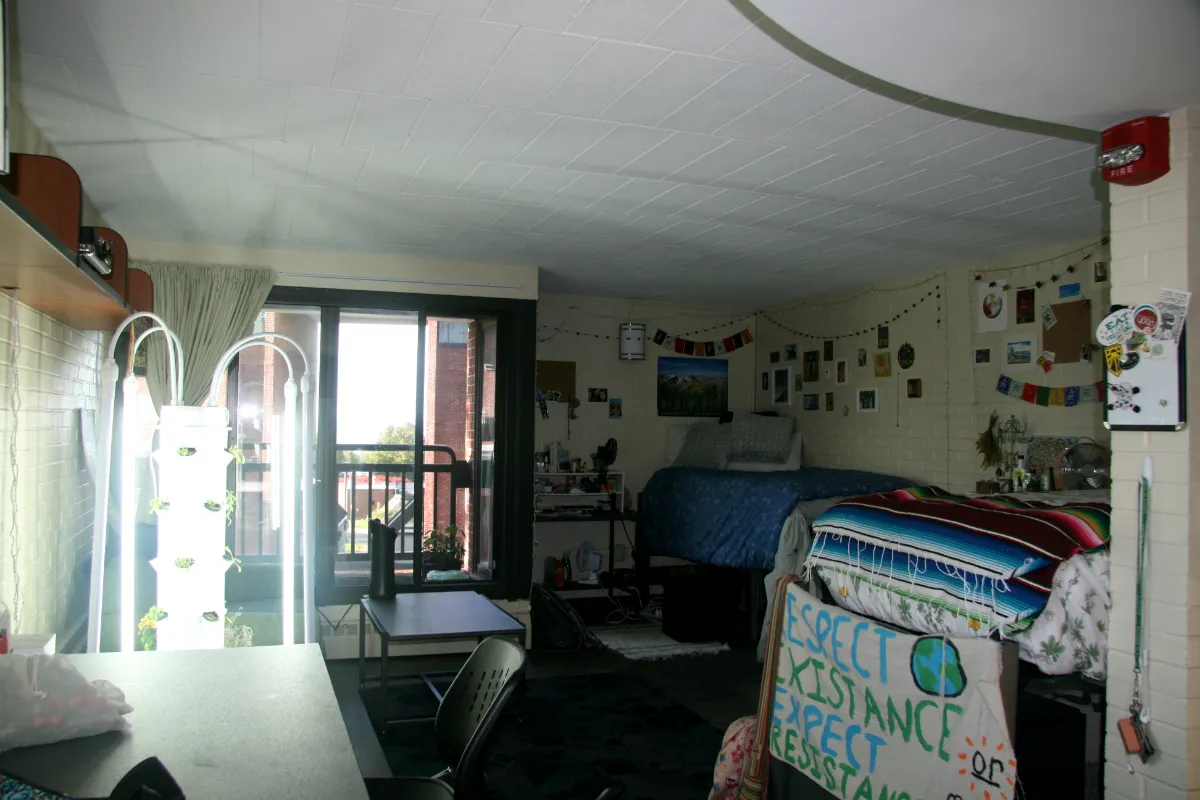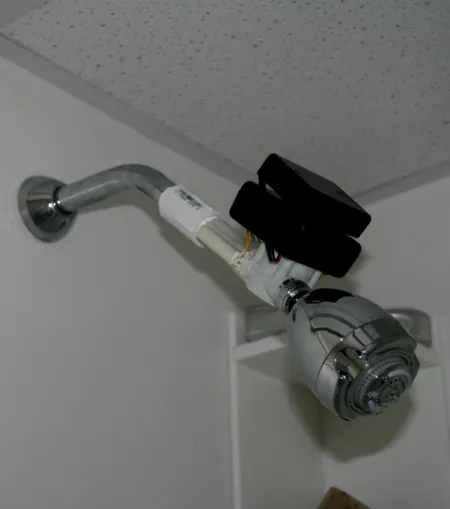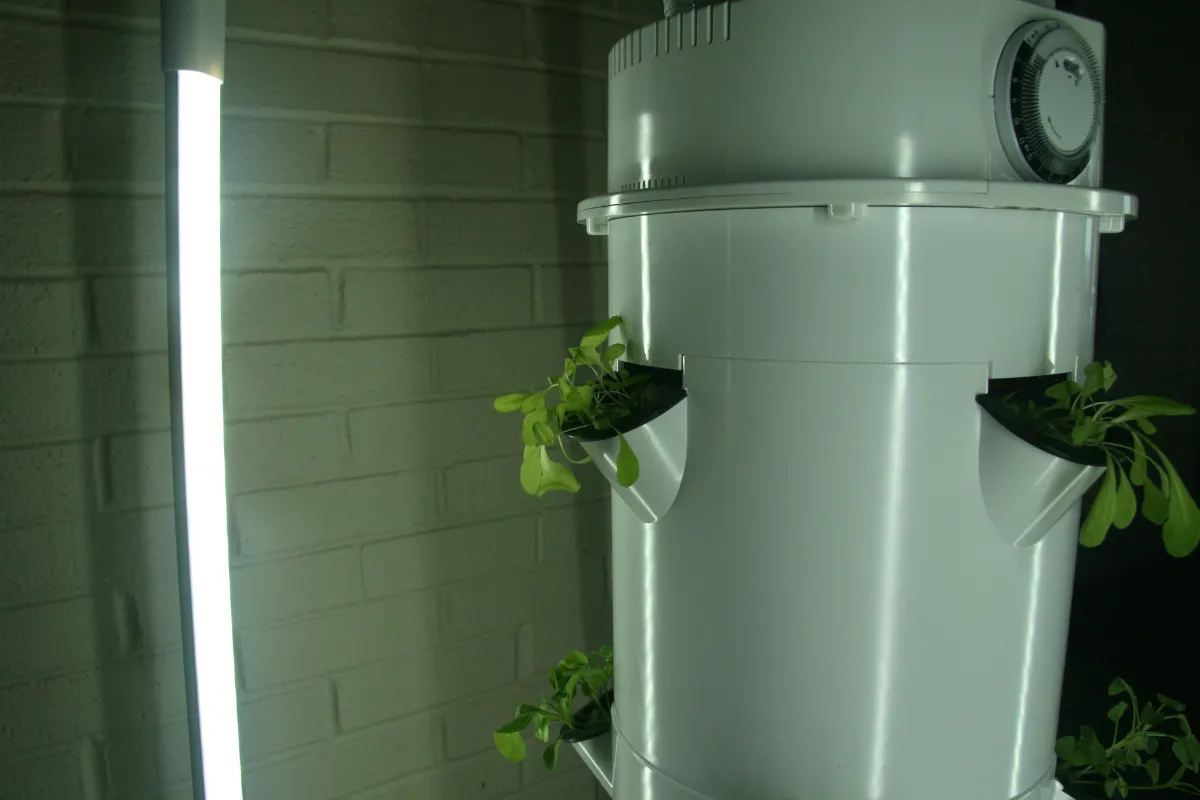In the Garden Apartment occupied by Ithaca College students Emily Gronquist ’22 and Alyssa Greaney ’22, not everything is what it seems. At first glance, you wouldn’t know the studio-style residence was outfitted with eco-friendly furnishings. That is, at least until your eyes were drawn to the giant white tower whose glowing white LED lights illuminate the rest of the apartment.
This alien device hints at what makes the seemingly ordinary room extraordinary. Little green plants sprout from the sides of the tower, a hydroponic garden. The sound of rushing water floods your ears as the machine hydrates the plants and feeds the vegetable sprouts.
The tower is just one part of the Chestnut Living Lab, a cross-campus project and experiment in environmentally friendly college living. Funded in part through a presidential seed grant, the project renovated a two-person studio in the Garden Apartments with energy-efficient lights, low-flow showerheads, and sustainably made furniture and flooring.
“If I didn’t know this was a different apartment — if someone didn’t tell me [about the renovations] — I wouldn’t know,” Gronquist said. “If anything it looks better.”


